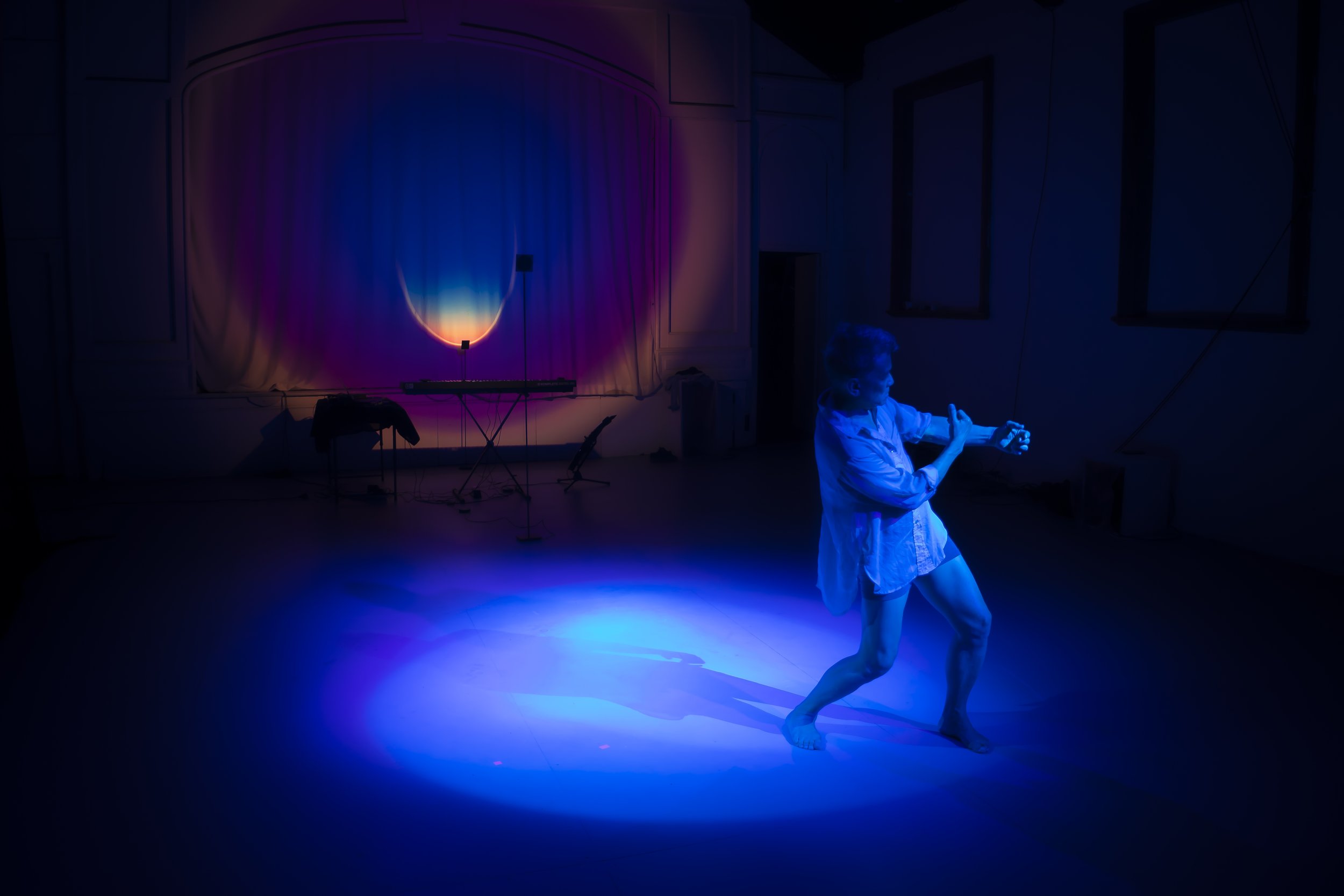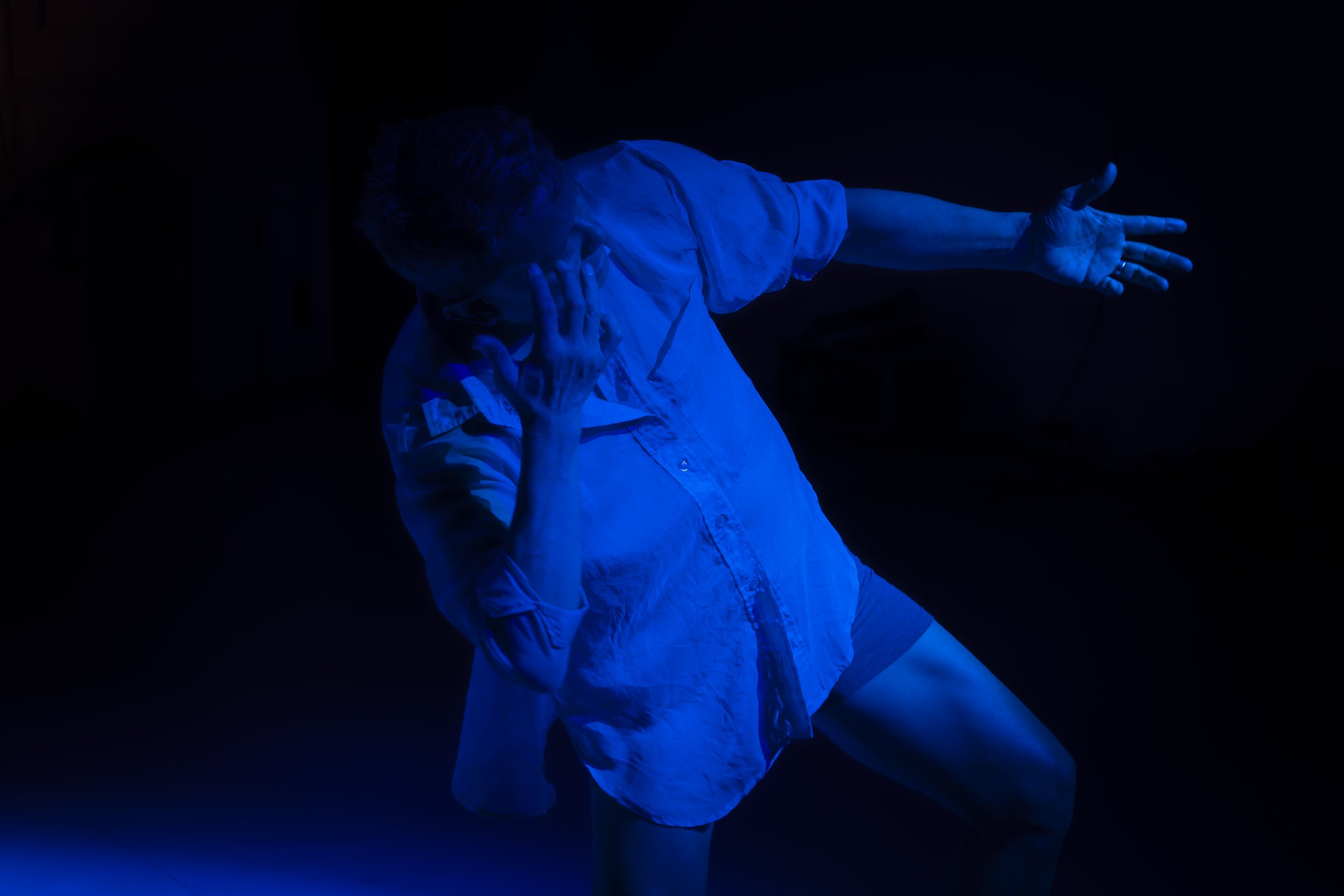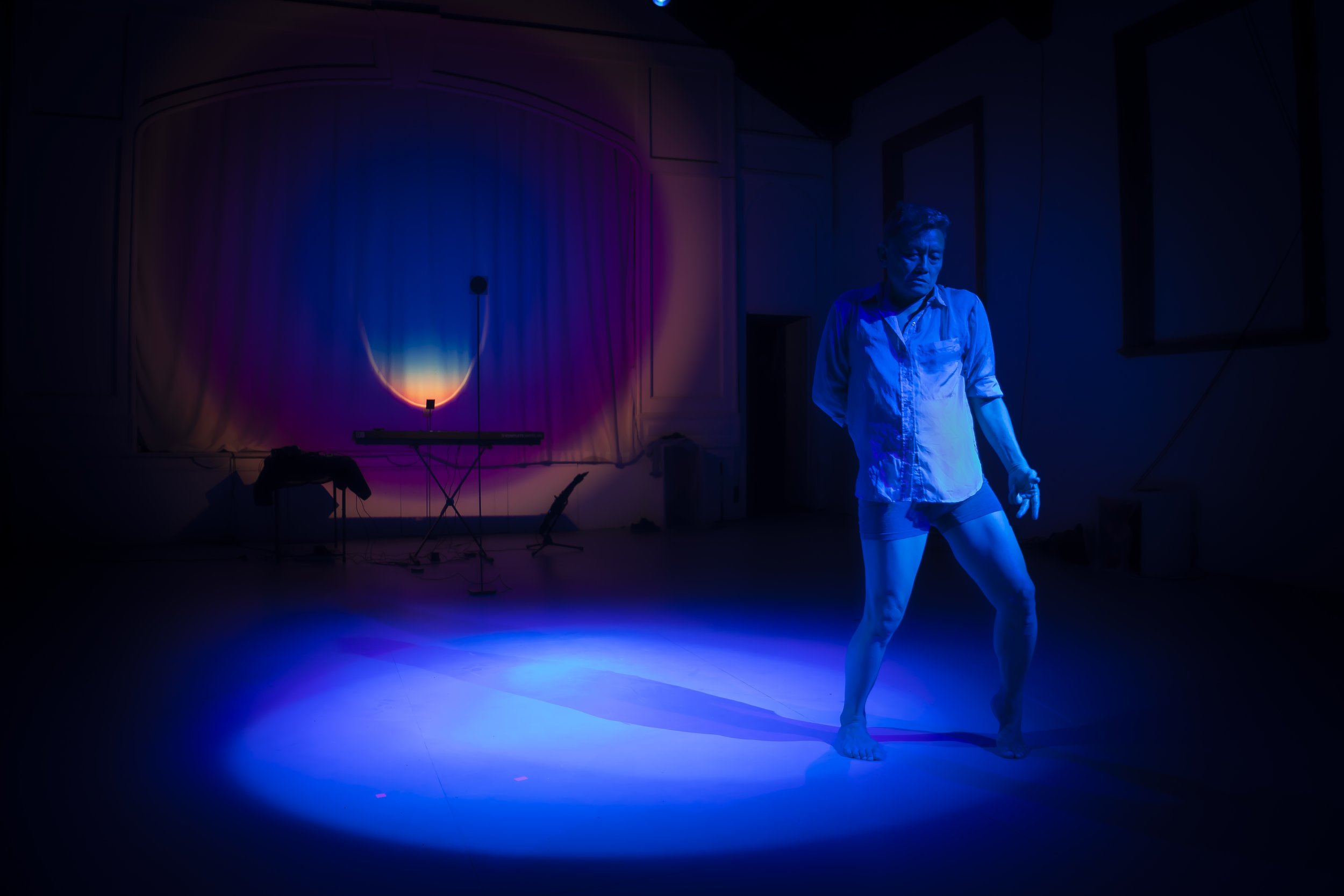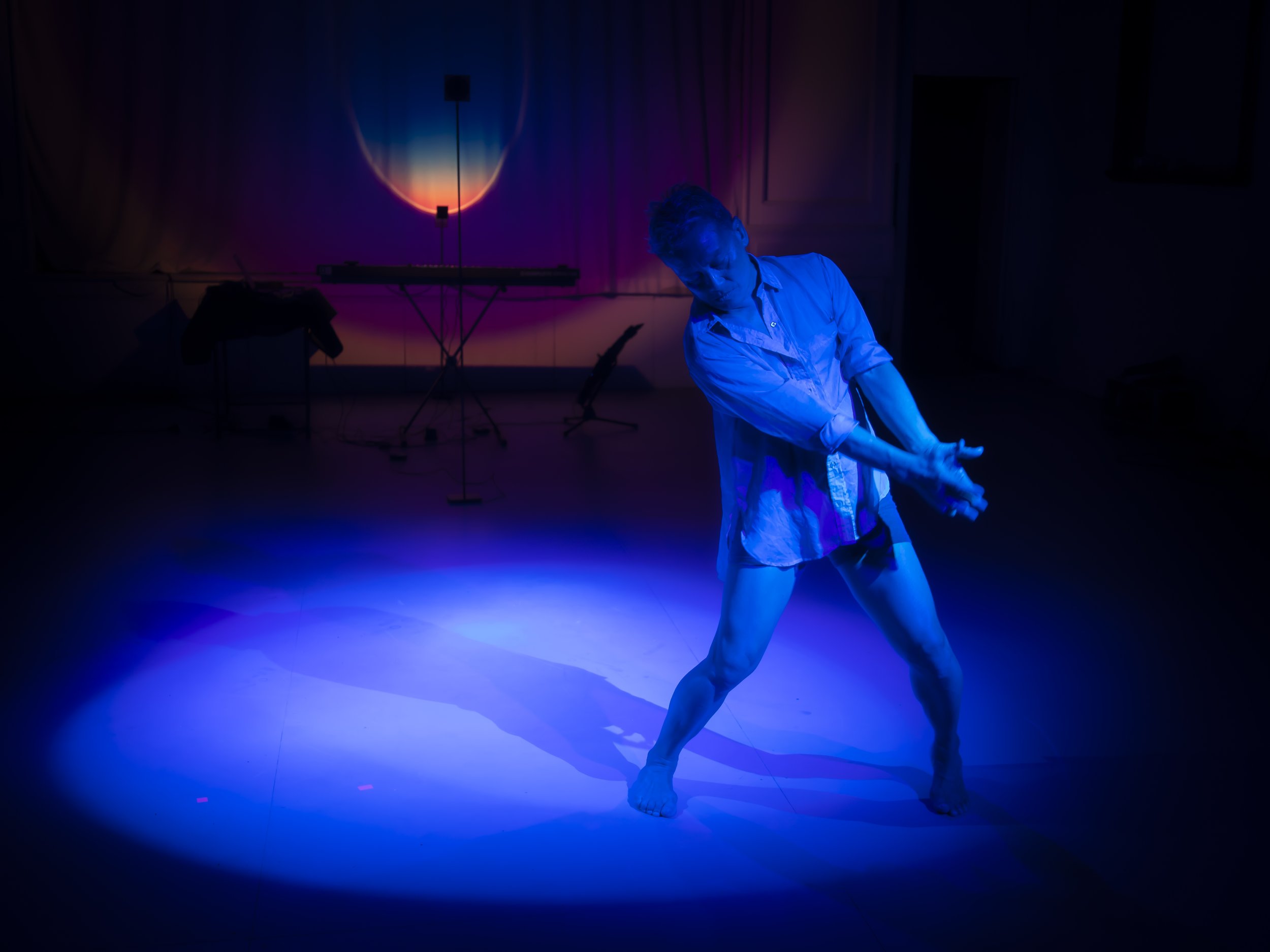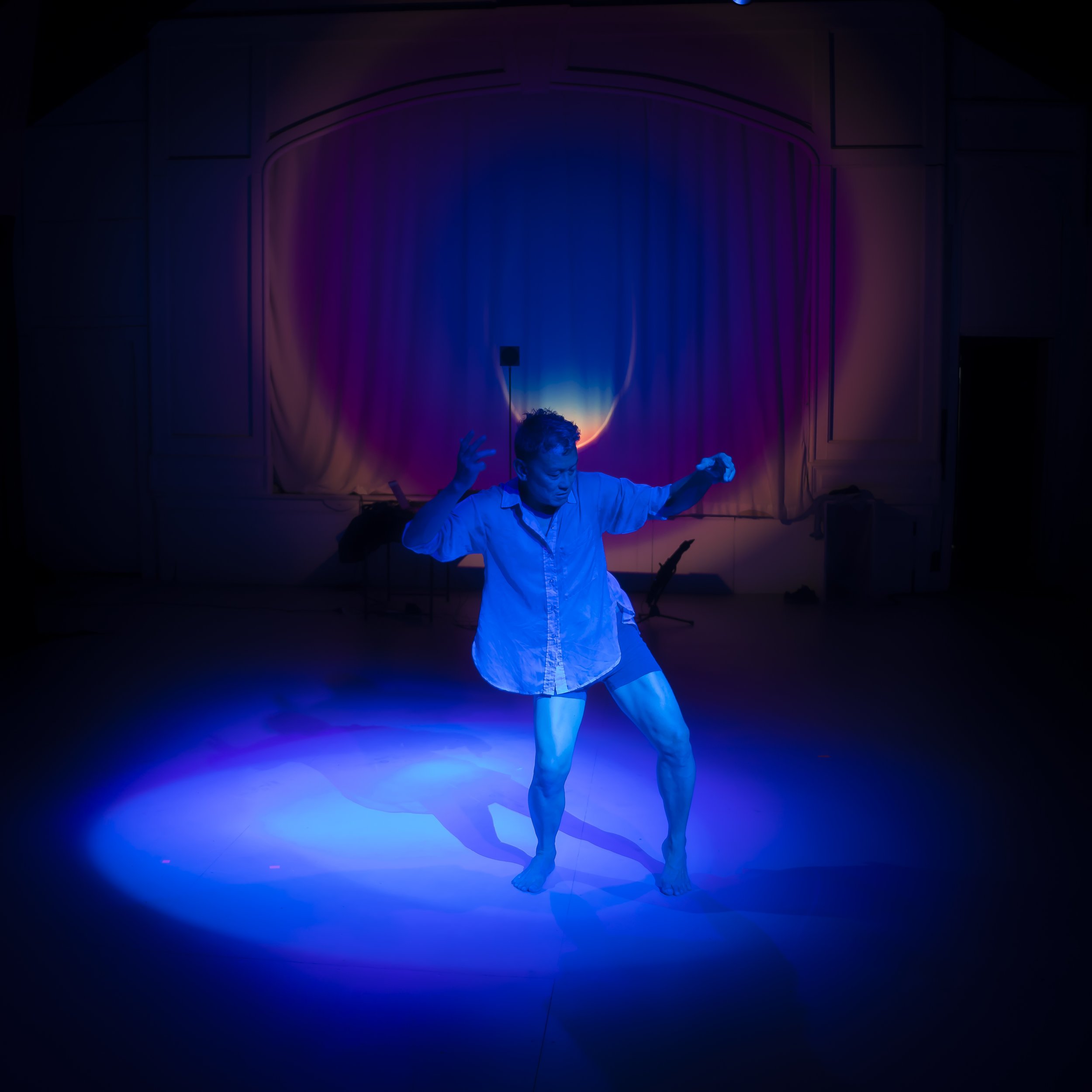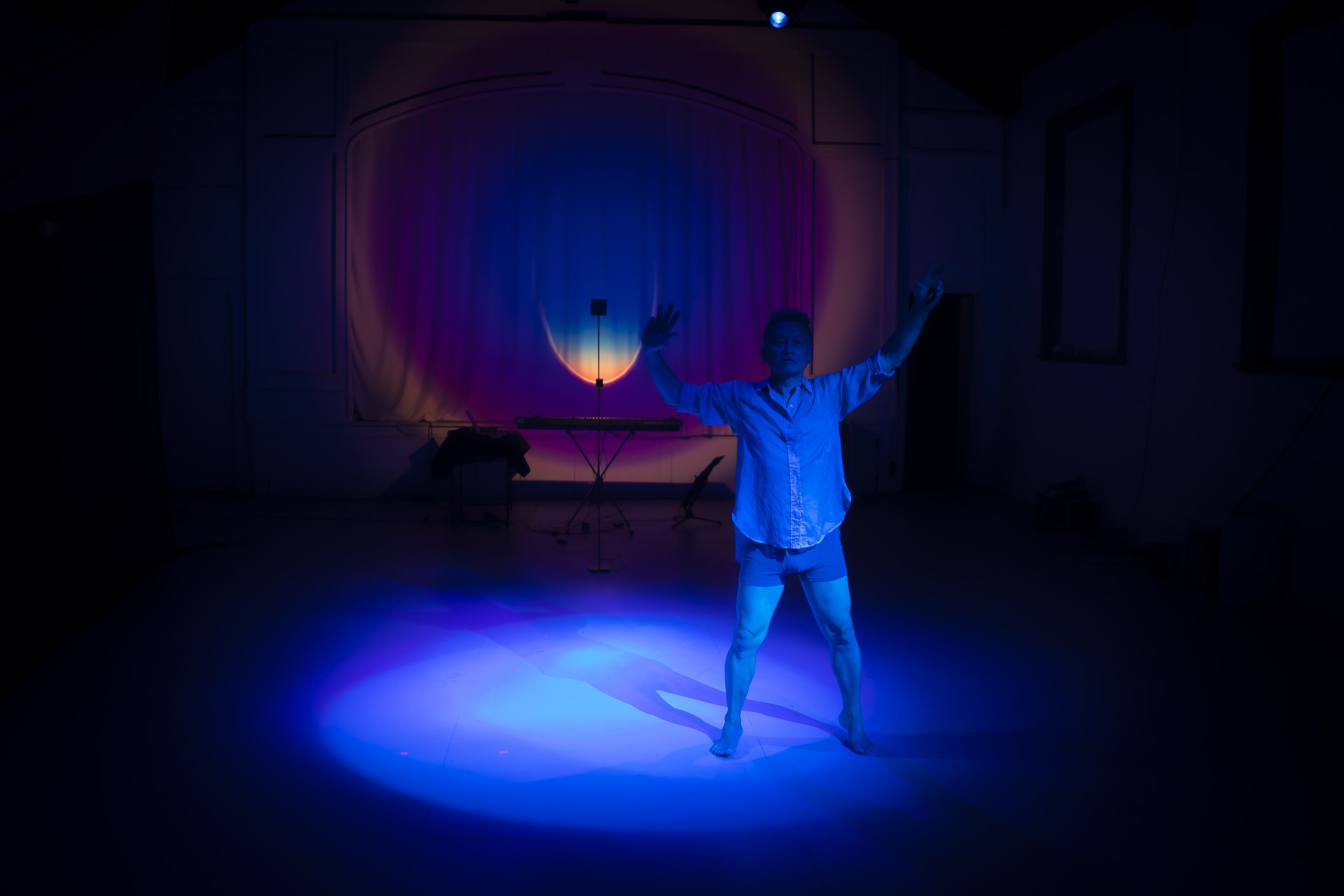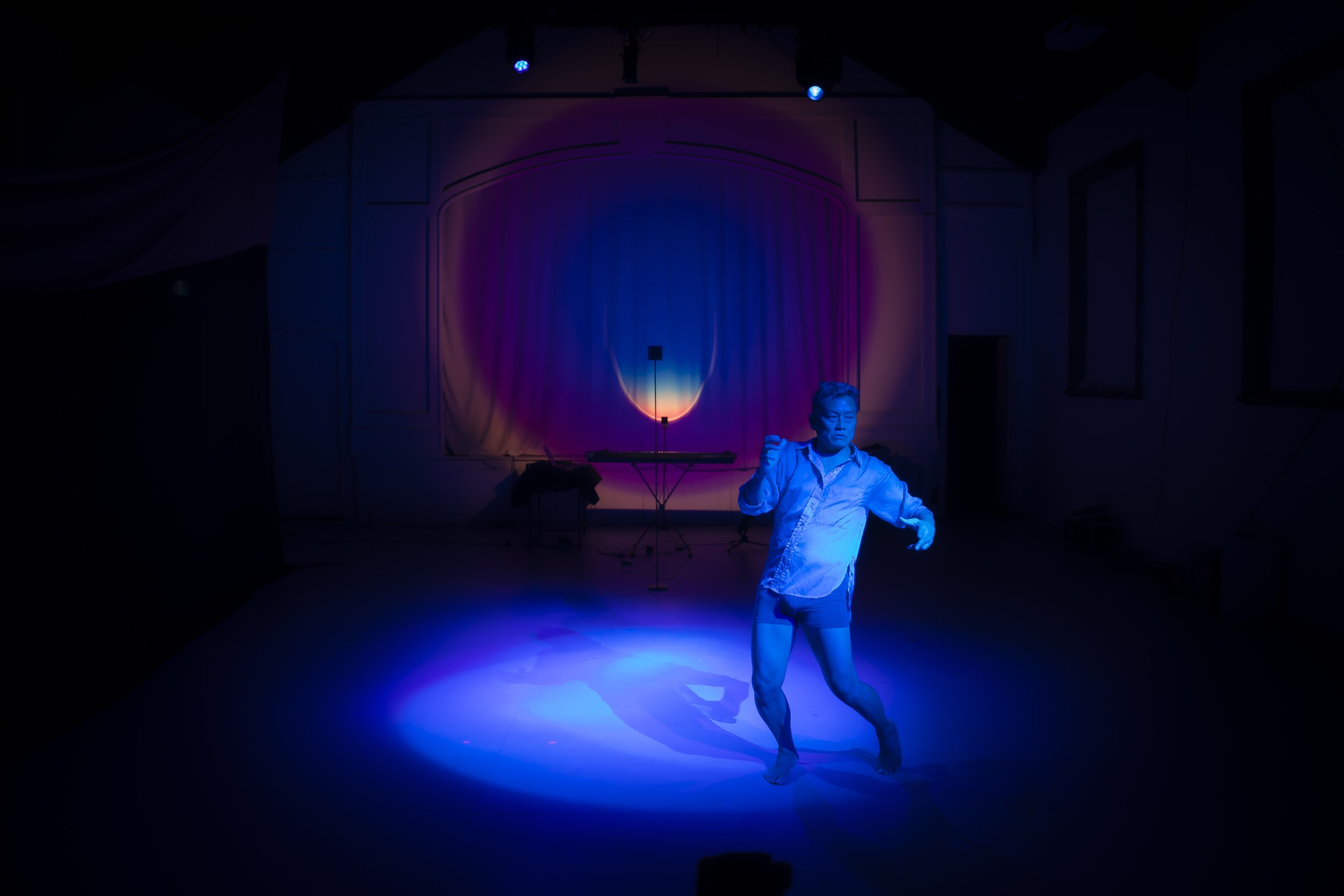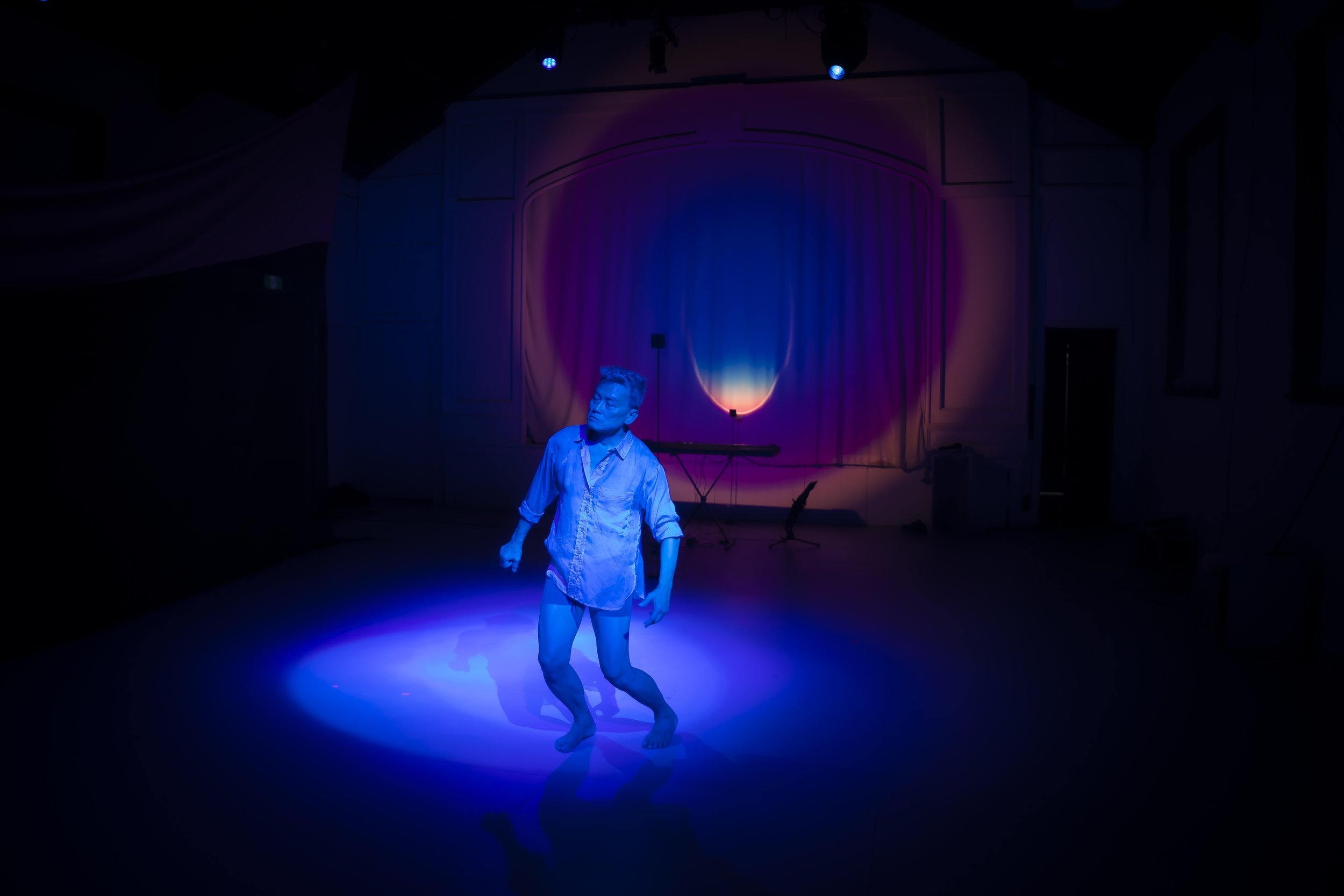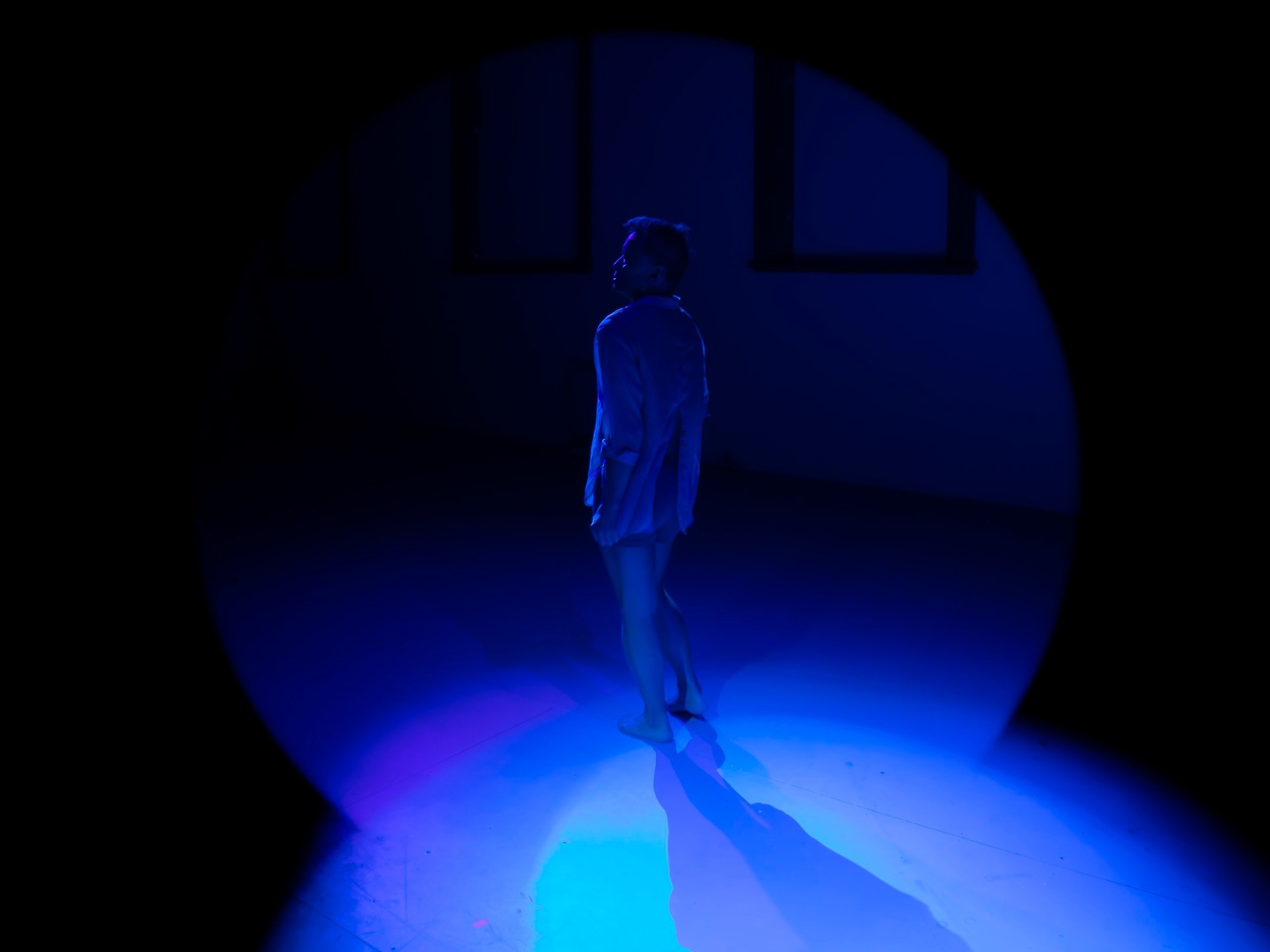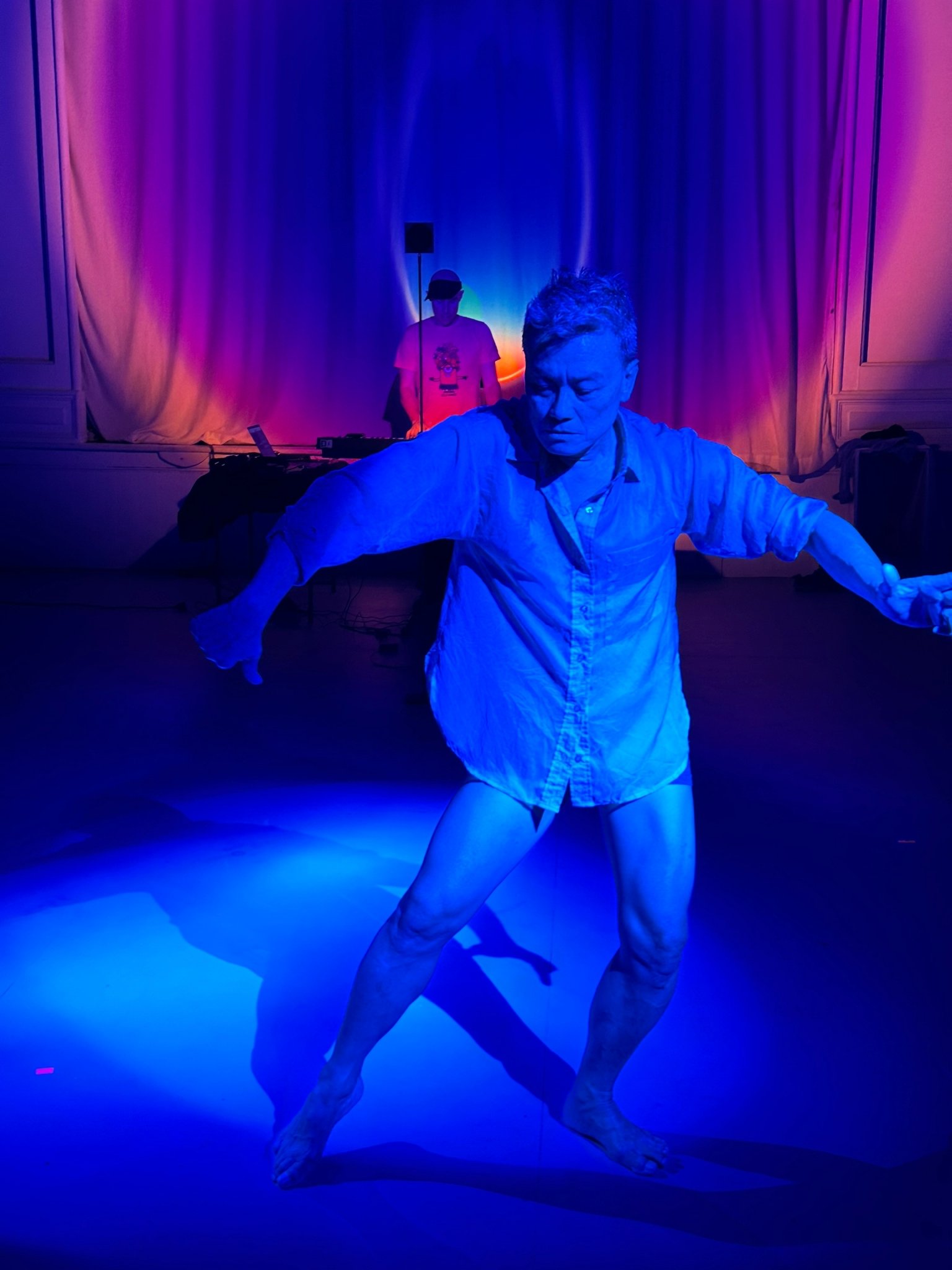


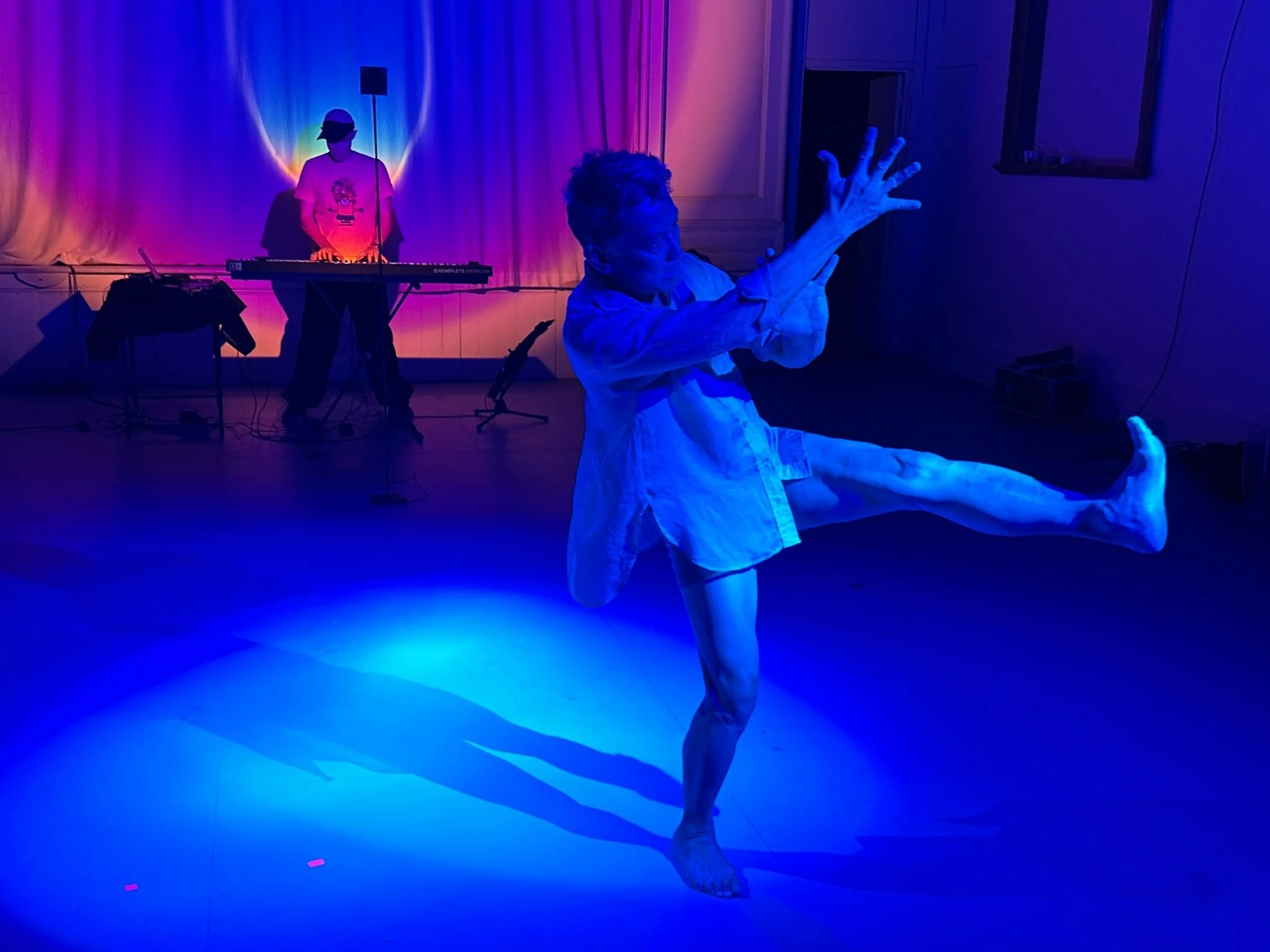




Affective Design Overview
Affective Design:
Interactive/ Immersive /
Performative / Installation
Affective Design Overview
Affective Design:
Interactive/ Immersive /
Performative / Installation
INtroduction
This area of my portfolio showcases an overview of currently featured projects and research that explore affective design resonance through the integration of sound, light, and interactive/spatial works.

Nurobodi
Nurobodi:
Affective DEsign Research
Nurobodi
Nurobodi:
Affective DEsign Research
Nurobodi
#AffectiveDesign #UX #Interactive #SpatialDesign #Research #Environments #SystemsThinking #Innovation #ProjectManagement
Introduction:
Affective Design Refers to the intentional creation of products, systems, or experiences that recognize, evoke, or respond to human emotions. It moves beyond functional or aesthetic considerations to embed emotional resonance as a core aspect of interaction. In affective design, emotional states are not seen as secondary outcomes but as primary drivers that influence user experience, decision-making, and connection.
At its core, affective design integrates insights from psychology, neuroscience, cybernetics and interaction desirn to craft interfaces, artifacts, or environments that anticipate and adapt to users' emotional needs—either passively (through careful emotional tone-setting) or actively (through real-time emotional feedback systems).
Overview:
Nurobodi is a long-form research and design project I founded in 2017 to investigate how adaptive audiovisual feedback environments can support mental, emotional, and physical wellbeing. It bridges disciplines — affective (emotional) design, sonic interaction, colour perception psychology, and mindfulness — to prototype interactive systems and environments that support heightened awareness and regulate cognitive-emotional states.
In short, Nurobodi’s design principles are not passive — they facilitate interfaces and experiences for emotional and cognitive alignment.



Take a deeper dive into some Nurobodi UX Case studies here 👈🏼 or,
See a summary of some Affective Design projects below on the page 👇🏼 or,

SonoChroma
SonoCHroma Software
SonoChroma
SonoCHroma Software
SonoChroma Keyboard is an interactive web-based application that transforms typed language into sonic and coloured ‘sonochromatic’ expression. Each keystroke becomes both a character and a note - an act of real-time audiovisual composition. Words emerge as melodies and chords, with various punctuation marks acting as drum sounds.
Rooted in progressive and accesible design thinking processes, the project positions accessibility not as an afterthought but as a generative principle. It asks: what might be learned from users who navigate colour or sound as a primary drive for interaction? Could such users, through their embodied expertise, become power users of systems like this - guiding future modes of creative access and affective communication?
This evolving software prototype explores what happens when affective resonance guides meaning making - playful interaction and exploration shapes tone and rhythm - all shifting ordinary typing into the presence of something new. The SonChroma Keyboard imagines interaction as more than information exchange: it becomes a field where novel approaches to design accessibility examine 'disability' as a social model.

Tony Yap Co - Mad Monk
Tony Yap COmpany- Mad Monk:
AudioVisual/INteraction
Production Design
Tony Yap Co - Mad Monk
Tony Yap COmpany- Mad Monk:
AudioVisual/INteraction
Production Design
Mad Monk - Audiovisual Production Design
#AffectiveDesign #LightingDesign #SoundDesign #AudioVisualDesign #ProductionDesign #LivePerformance
Introduction:
Tony Yap, born in Malaysia, is an accomplished dancer and a multidisciplinary artist. He has been a distinct figure in intercultural discourse and received Asialink residential grants spanning a decade from 2025 and is also a Dance fellowship recipient from the Australia Council for the Arts. Tony is the founding Creative Director of Melaka Arts and Performance Festival–MAP Fest. Tony continues in his contribution significantly to the development of contemporary dance & performance practice, bringing a non-Western perspective to the palette of work being created. His practice is grounded in Asian philosophies, sensibilities and forms
Summary and Deliverables
The Project “Mad Monk” featured as part of FRAME: A biennial of dance at Temperance Hall. My role as the production designer for live performance included:
Lighting/Stage Design
Performance Interaction Design
Colour Design
Sound Design
Live Audiovisual Production Design
Live AV Interaction Performance
Key Insights
This work was included in a broader biennial of dance Curated by Temperance Hall’s Artistic Associate Luke George and included an epic line-up of some Naarm’s most electric artists working in dance, sound, visual installation and costume design amalgamated as ‘ALIENS OF EXTRAORDINARY ABILITY’
The biennial event ALIENS was inspired by Luke’s time living in Brooklyn, New York City between 2010-2017, and his collaborations and participation in the many grass-roots and community/artist-led performance events organised, enacted and attended by expansive and diverse artists and queers of New York.
ALIENS OF EXTRAORDINARY ABILITY takes its title from the bizarre name of the artist-visa required for a creative to enter, reside and work in the USA. These happenings intend to reclaim “othering” and transform such through an art gathering which celebrates the electric, inclusive and spontaneous energy of Melbourne’s incredible alternative queer party scene.

TCRE (Industry)
RMIT COurse Design:
Transformative Colour
Resonance Environments
TCRE (Industry)
RMIT COurse Design:
Transformative Colour
Resonance Environments
Transformative Colour-Resonance Environments (TCRE)
#AffectiveDesign #DesignPsychology #ColourPsychology #AudioVisualDesign DesignByResearch #UX #ProcessMapping #ProductionDesign #IterativeDesign #QuantativeAnal #QualitativeAnal #ExhibitionDesign #DigitalMediaCuration
Introduction:
Resonance and Colour, as spectrum languages for designing and conveying impactful emotional experience, are more often than not subconsciously tied to memory, social constructs and dominant cultural or utilitarian functionality. This learning design, training and assessment course provides a structured design by research methodology which applies comparative analysis of empirical and quantitative studies of audiovisual-colour resonance and how modulations and transformations are affective. Individual user-research pathways are integrated within broader fields of UX/interaction design as technical and creative resonance and colour theory and research.
Overview:
With a strong conceptual and research focus on developing procedural, persuasive, informative, technical and research writing and design documentation frameworks for presenting both process and performative digital media. Outcomes contextualise and integrate resonance and colour based on the general foundations of data/science and behavioural psychology in an innovative, creative and explorative way. Finally, exploration of process documentation of practise based research as emergent multi-sensory environmental design outputs is realised through exhibition curation as an expression of immersive and interactive folio presentation.
Deliverables:
skills development focuses on:
Researching conceptual and practical integrations of resonance and colour, based on the scientific foundations of each, as well as learning about and applying foundational behavioural psychology in a creative and explorative way
Developing design psychology skills, with a particular deep research focus on understanding relationships between resonance and colour.
Innovate beyond current benchmarks for digital media practice and build on ways to add tools and approaches to enhance applied design thinking.
Designing platform-based virtual gallery experiences of project research, design, and development
Key Insights:
Quality and refined accumulation of TCRE research expressed and communicates overarching creative and technical cohesion of innovative approaches to strategic design thinking and practice. Highly polished audiovisual work(s) that clearly demonstrate iterative development of both final outputs and both qualitative and quantitative user research that inform outputs.
Skills development also demonstrates proficiency utilising a software agnostic interdisciplinary design approach to project-specific briefs, including exhibited process/workflow as design outputs.

RMIT VX ROBOTICS LAB (Industry)
RMIT VX ROBOTICS LAB:
Co-Design for Networked
MultiScreen Arrays
RMIT VX ROBOTICS LAB (Industry)
RMIT VX ROBOTICS LAB:
Co-Design for Networked
MultiScreen Arrays
Empathy Design for Multi-SCreen Arrays
#UX #XR #Interdisciplinary #Strategy #Research #Course Design #SpatialDesign #SystemsThinking #Innovation #ProjectManagement
Introduction:
This project showcases my interdisciplinary capability in pioneering innovative uses of RMIT’s Virtual Experiences Laboratory (VXLab), specifically by integrating technical development of the advanced tiled display technology within the GOV Lab as an immersive distributed yet synchronised collective co-design expression. Collaborating directly with Dr. Ian Peake, Technical Manager of VXLab, I strategically extended the lab’s media capabilities for XR-enriched industry, creative and educational experiences.
Overview:
Collaborating closely with RMIT VX Robotics Lab manager, Dr. Peake, I proposed and implemented novel methods and use case to the VX Lab’s multi-screen array. My role involved agile project management, technical exploration, and effective communication with stakeholders, including students and technical staff. This approach ensured that creative and educational objectives aligned with existing technical constraints, delivering innovative multimedia experiences.
Summary:
The core objective was to explore and maximize the VX Lab's technical and operational capabilities whilst simultaneous utilising the Lab to demonstrate extended design and social context for overlapping pedagogical and industry collaborations.
The outcome was a suite of custom-developed tools and an immersive audiovisual design exhibition, enabling both technical and creative use of the Lab’s multiscreen array. This facilitated unprecedented creative opportunities for students and extended the technical functionality of the VXLab itself to better serve industry relations by demonstrating:
System design and testing research for industry partners with complex combinations of systems, design models and tests
Distributed, collaborative design, prototyping and troubleshooting requiring multiple views of complex data;
Prototyping and development of novel visualisation networking
High resolution and live immersive audiovisual rendering of layered image/colour/sound.
Student UX Affective Design Mapping
Composite Empathy/Identity Testing
Audiovisual Affective Production Design Lecture
Deliverables:
Interdisciplinary Design/STEM strategic project modelling
Interdisciplinary Design/STEM technical/creative design research and course design
Co-Design, development and deployment of custom tools and methods for ultra-high-resolution multi-screen array integrations.
Agile management of student learning pathways and project assets within technical resource limitations.
Innovative integration of advanced A/V technologies into overlapping Design/STEM educational contexts.
Enhanced immersive multimedia learning experiences above and beyond benchmark standard visual practice.
Behind The Scenes:
Key Insights:
This initiative highlights the effectiveness of interdisciplinary and strategic design thinking in navigating resource constraints to innovate educational technologies. It exemplifies how agile project management and effective communication among interdisciplinary teams and stakeholders can foster significant technological advancement and amplify institutional capacity for Design/STEM integrations as a way to meet evolving industry demands and foster creative education and research innovation.

RMIT Capitol Theatre (Industry)
XR Design for RMIT/Capitol Theatre:
Bridging Physical and Digital
Affective Environments
RMIT Capitol Theatre (Industry)
XR Design for RMIT/Capitol Theatre:
Bridging Physical and Digital
Affective Environments
Digitising the Capitol Theatre in 360 For Immersive Affective Design Video
#AffectiveDesign #UX #Interactive #SpatialDesign #Research #XREnvironments #360Video #Innovation #ProjectManagement
Introduction
In an era where hybrid cinematic experiences are reshaping audience engagement, this project asked: How can we extend the cultural presence of historically significant venues like the Capitol Theatre into virtual realms, while also enabling student filmmakers to prototype within immersive production environments?
Responding to this challenge, students were embedded within a real-world simulation of a film production studio, assuming professional roles across all stages of the production pipeline. My role as Lecturer involved directing the project while serving as Director of Photography (DOP) and Production Manager — ensuring students navigated both the creative and technical complexities of XR filmmaking.
Overview
Digitising the Capitol Theatre in 360 was an immersive learning initiative that integrated cutting-edge volumetric capture technologies, cinematic storytelling, and extended reality (XR) postproduction workflows. The project formed part of a blended learning pipeline designed to upskill students in emerging media practices through a practice-based research framework. Using the Insta360 Pro 2 camera system, students worked collaboratively to reimagine Melbourne’s iconic Capitol Theatre as an experiential XR canvas.
Project Summary
The workshop unfolded in three distinct but interlinked phases, each designed to scaffold both technical competency and conceptual fluency:
1. Preproduction (Location-Specific)
Students visited the Capitol Theatre to scout the space, develop spatial storyboards, and identify key cinematic perspectives. This phase emphasized production design for 360° capture — a unique challenge requiring spatial choreography and non-linear thinking.
2. Production (On-Site Filming with Insta360 Pro 2)
Using the Insta360 Pro 2, students executed location shoots in 8K stereoscopic video, engaging in:
Camera rig operation and spatial blocking
Sound spatialisation and ambient audio capture
Data wrangling and file management in a multi-terabyte workflow
Students also learned to convert raw 8K footage to 4K for accessible postproduction editing.
3. Postproduction (Remote/Hybrid)
The final stage explored an innovative technique: embedding students’ standard UHD video projects within the Capitol Theatre’s virtual cinema screen. The result was a layered spatial montage — their own narrative short films premiered inside the virtual Capitol. This simulated the prestige of screening at an iconic venue, while maintaining a fully immersive 360° environment.
Deliverables
360° digital twin of the Capitol Theatre interior
Student-led immersive short films, premiered within a virtual theatre screen
Collaborative production logbooks documenting roles, workflows, and reflections
Exported immersive videos suitable for VR headsets and web-based XR platforms
Practice-based research reflections for each student, focused on role-based learning and spatial design insights
Key Insights
Spatial storytelling changes how students understand screen direction and audience agency. Working in 360 forced them to think beyond the frame and into spatial experience design.
Emergent pipelines require interdisciplinary coordination. The film production company model helped students understand the interplay between direction, DOP, postproduction, and digital asset management in new media formats.
Simulating real-world prestige environments creates affective motivation. The act of ‘screening’ their film within the virtual Capitol theatre had a powerful psychological effect — making the experience tangible and emotionally resonant.
Blended learning supports real-world readiness. The combination of in-location production and remote post workflows mirrors contemporary XR production pipelines used in the industry.
Digitising the Capitol Theatre in 360 not only introduced students to extended reality filmmaking but also provided a framework for collaboration, creative ownership, and spatial literacy in digital storytelling. The outcome was more than just immersive content — it was a generative learning environment, equipping students to prototype the future of cinema itself.
A Virtual Tour of the Capitol
This is an example of an RMIT alumni student work, Lucy Ryan, that captured a creative approach to an immersive audiovisual tour of the Capitol Theatre. It serves both as documentation and preservation of cultural place/space but also doubled as a medium for designers to explore augmentation and bridging of virtual and physical space in an immersive, interactive and there











